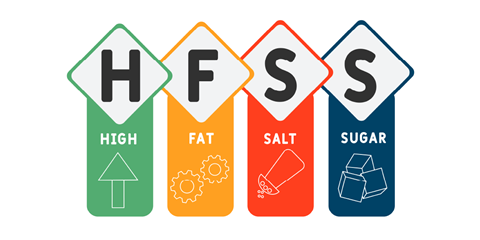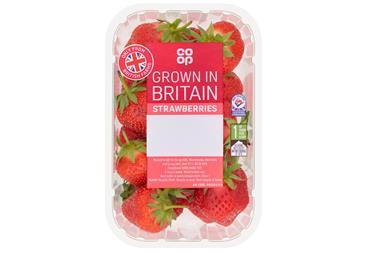While HFSS legislation in the interests of national health continues to encourage reformulation, one area where manufacturers could make a difference is with lower sodium content in their products, bringing a number of benefits to the table.
With the UK gradually introducing new legislations to target foods high in fat, salt, and sugar (HFSS) as part of a broader effort to combat obesity and improve public health, the promotion and sale of HFSS products has come under scrutiny, encouraging both manufacturers and consumers to make healthier choices.
Key to these regulations is the Nutrient Profiling Model (NPM), which scores foods based on their nutritional content and, as companies choose to lower their HFSS scores, innovations including low-sodium foods are emerging as powerful tools in the new landscape.
Understanding the HFSS targets: a new era for food regulation

Developed with the involvement of the UK’s Department for Health & Social Care alongside the Department for Digital, Culture, Media and Sport, these HFSS regulations – some of which have already been introduced, with others on the horizon – restrict where and how HFSS foods can be advertised, promoted, and placed in retail environments. For instance, part of the legislation already introduced ensures that products classified as HFSS cannot be displayed in prominent positions in supermarkets, such as near checkouts or at the end of aisles. Upcoming legislation, so far deferred until October 2025, is designed to ensure HFSS foods cannot be advertised during peak hours on television or in other prominent media channels.
The NPM model – to determine which products are classified as HFSS – assesses foods based on their content of energy (calories), saturated fat, total sugar, and sodium (salt), all of which are considered less healthy and with the potential to contribute more readily to obesity. Points are assigned based on the levels of these nutrients per 100g of food or drink. Foods are also scored on what are considered more positive nutrients in terms of health – such as fibre, protein, and the content of fruits, vegetables, and nuts.
The formula is straightforward:
- Negative points: Accumulated for calories, saturated fat, sugar, and salt.
- Positive points: Awarded for beneficial nutrients like fibre, protein, and certain whole foods.
Scoring like golf: why a lower score wins
A product’s final score is calculated by subtracting the positive points from the negative points. A lower score means the product is considered healthier, while a higher score indicates a less healthy product that will be subject to the new restrictions.
In this new regulatory environment, a lower score not only means a product is classified as non-HFSS, but it also grants the manufacturer greater freedom in how they can market and sell the product.

Currently, lower-scoring non-HFSS products can be placed in more prominent positions within stores, such as at the end of aisles or near checkouts, where they are more likely to attract consumer attention. This prime shelf real estate is critical for driving sales.
However, in future, should the legislation be enforced next year, non-HFSS products will also enjoy several other advantages, such as
Marketing and advertising : Products with low HFSS scores will not be subject to the same advertising restrictions as those with higher scores, and will be allowed to promote more freely on television, online and in other media, giving them a competitive advantage in the marketplace.
Brand reputation and consumer trust: As consumers become increasingly aware of the health impacts of their food choices, products with lower HFSS scores are likely to be seen as more aligned with healthy eating trends. Brands that can consistently offer low-scoring, healthier options could gain a significant boost in consumer interest.
Compliance and risk management: Adhering to HFSS regulations is not just about marketing; it’s also about avoiding penalties. Products that meet the lower scoring criteria help manufacturers and retailers stay compliant, avoiding fines and other potential legal issues.
The role of salt in HFSS scores: a critical factor

Among the nutrients assessed in the NPM, salt (sodium) is a significant contributor to negative points. High sodium levels in food are linked to various health issues, including hypertension and cardiovascular diseases. For many processed foods, reducing salt content is a major challenge because salt plays a critical role in flavour and preservation.
This is where innovations like MicroSalt® come into play. MicroSalt’s patented technology delivers the same saltiness as regular salt but with significantly less sodium. The key to its effectiveness lies in its patented small particle size. This smaller size increases the surface area, meaning that when it’s applied to food, it dissolves faster and delivers a more intense salty flavour with less actual salt.
As the food industry works to lower HFSS scores, MicroSalt offers a viable solution for reducing sodium content without sacrificing flavour. Here’s how it makes a difference:
1. Sodium reduction without taste compromise: One of the biggest challenges in reducing HFSS scores is cutting down on sodium without affecting the taste consumers expect. MicroSalt’s smaller particles ensure that the food retains its salty flavour even with significantly less sodium. This means that manufacturers can reduce the negative points associated with sodium in their products, helping to lower overall HFSS scores.
2. Maintaining product integrity: Reformulating products to meet HFSS targets can sometimes result in changes that affect the product’s texture, shelf life or overall appeal. MicroSalt allows manufacturers to reduce sodium content without altering other critical aspects of the product, ensuring that the final product remains as appealing to consumers as before.
3. Supporting broader reformulation efforts: In addition to reducing sodium, many manufacturers are looking at ways to reduce other negative nutrients, like saturated fats. MicroSalt can be an integral part of a holistic reformulation strategy, helping to achieve a lower HFSS score across multiple nutrient categories.
4. Marketability of healthier products: With the growing consumer demand for healthier food options, products that are reformulated using MicroSalt can be marketed as lower in sodium, potentially boosting their appeal to health-conscious consumers. This not only helps in complying with HFSS regulations but also aligns with broader market trends towards healthier eating.

MicroSalt’s golden opportunity in the new HFSS landscape
In this new era, achieving a low HFSS score is like winning in golf – the lower, the better. For companies looking to stay competitive, innovative solutions like MicroSalt offer a way to reduce sodium content, improve HFSS scores, and maintain the taste and quality that consumers expect.
As the industry continues to adapt to these regulations, those who embrace such innovations will not only stay ahead of the curve but also contribute to the broader goal of improving public health. In a world where the lowest score wins, MicroSalt is proving to be an invaluable asset, helping companies score a hole in one in the new HFSS landscape.
For more details on MicroSalt visit the links below:
IG: @microsalt.uk
LinkedIN: https://www.linkedin.com/company/microsalt-uk/



















